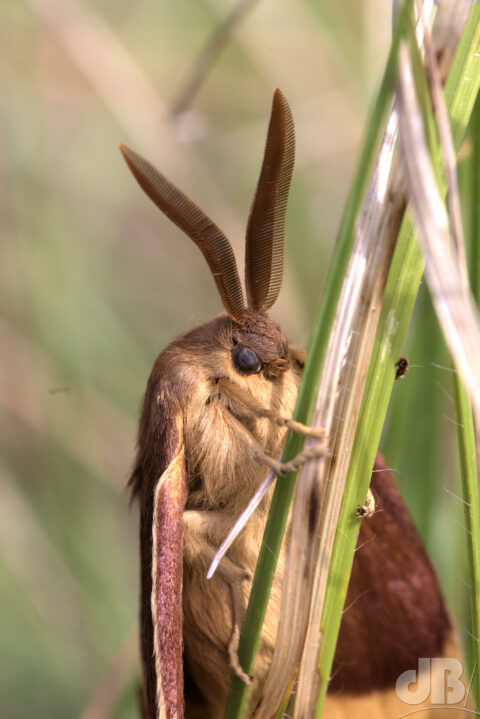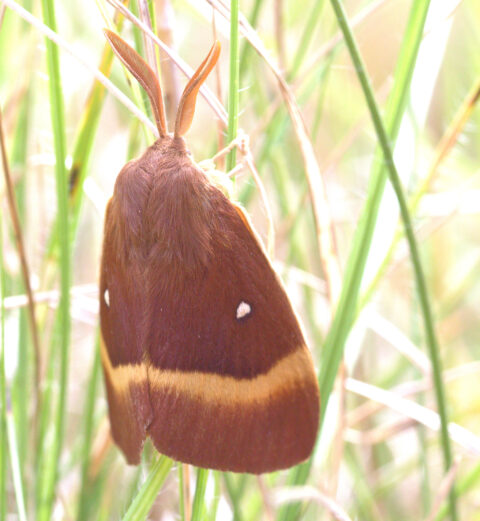I went looking for Chalkhill Blue at Devil’s Dyke, Cambridgeshire, this morning, having seen several hundred there this time last year. There must’ve been 1000 or so today out and about on the banks of the Dyke and the chalky footpath. There were also dozens of Marbled White, a dozen or so Dark Green Fritillary, and several Brimstone butterfly, a few skippers (Small mainly), lots of Cabbage B*st*rds, and just one solitary male Oak Eggar moth. He has something of the Donnie Darko about him, this one, I’d say…

The moth’s name comes from its chrysalis looking like an acorn and the “enormous” eggs the females lay. The males are day fliers, the females are active at night. Those antennae! Oh my!

The Oak Eggar (Lasiocampa quercus) is a species of moth belonging to the family Lasiocampidae, which are commonly referred to as “eggars”, their eggs are large and resemble acorns hence the name. The moth doesn’t really have an association with oaks. These moths are found throughout Europe, including the United Kingdom, and are also present in parts of Asia.
The Oak Eggar is a medium-sized moth with a wingspan that ranges from 45 to 70mm. The wings are typically a yellowish-brown colour with darker brown or greyish-brown markings. The males have feathery antennae that are used to detect pheromones released by the female moths as a sex attractant.